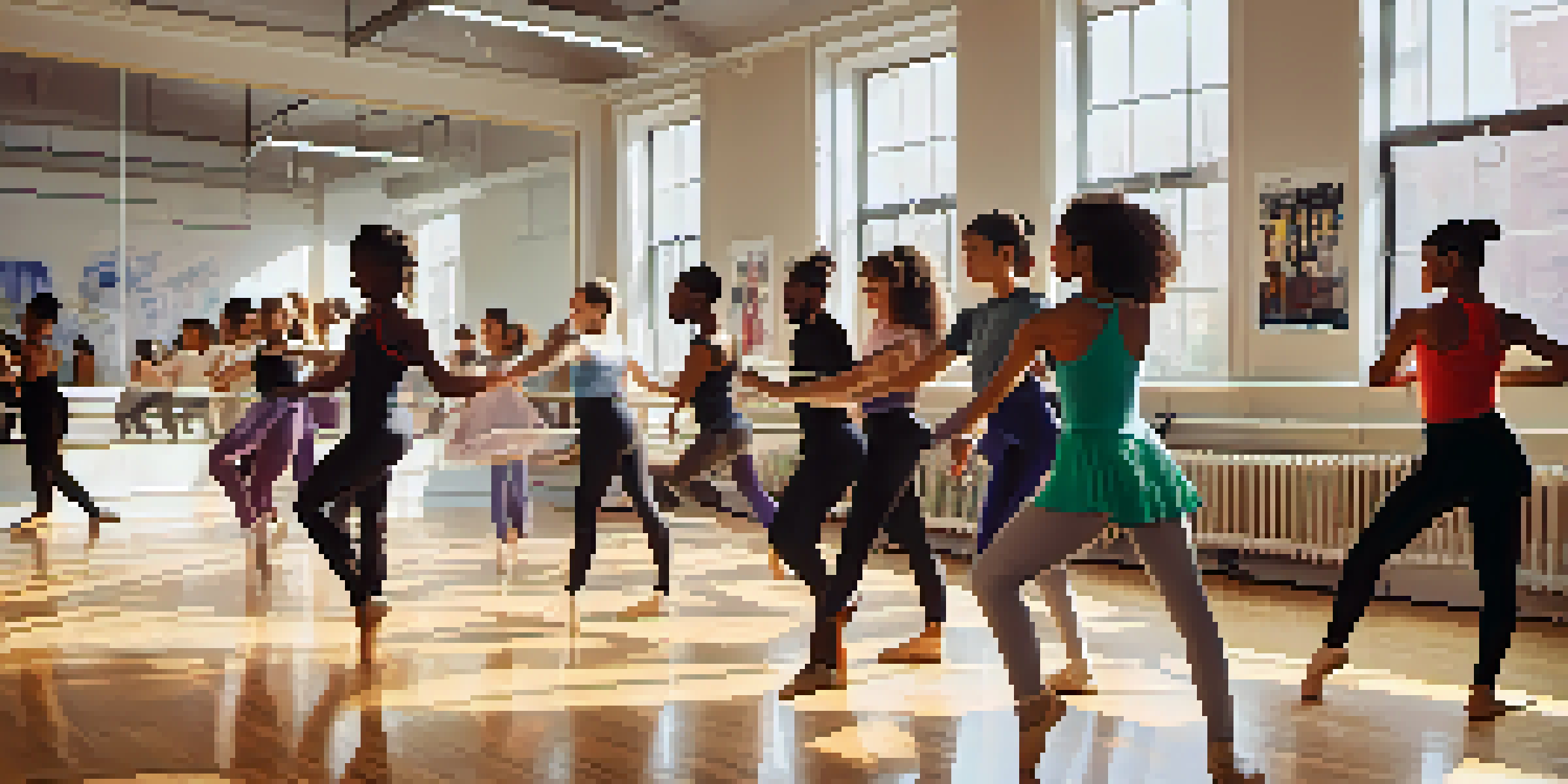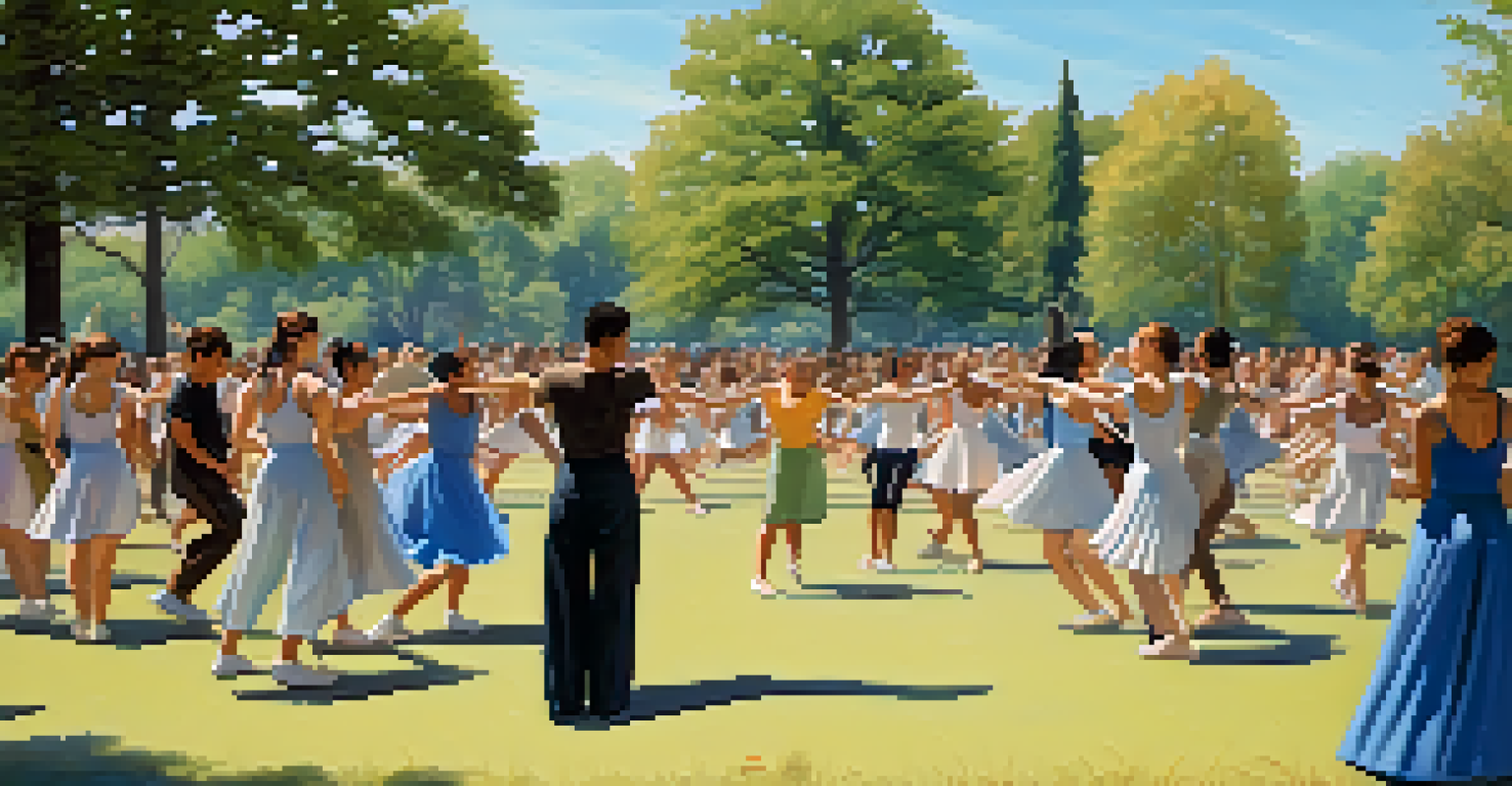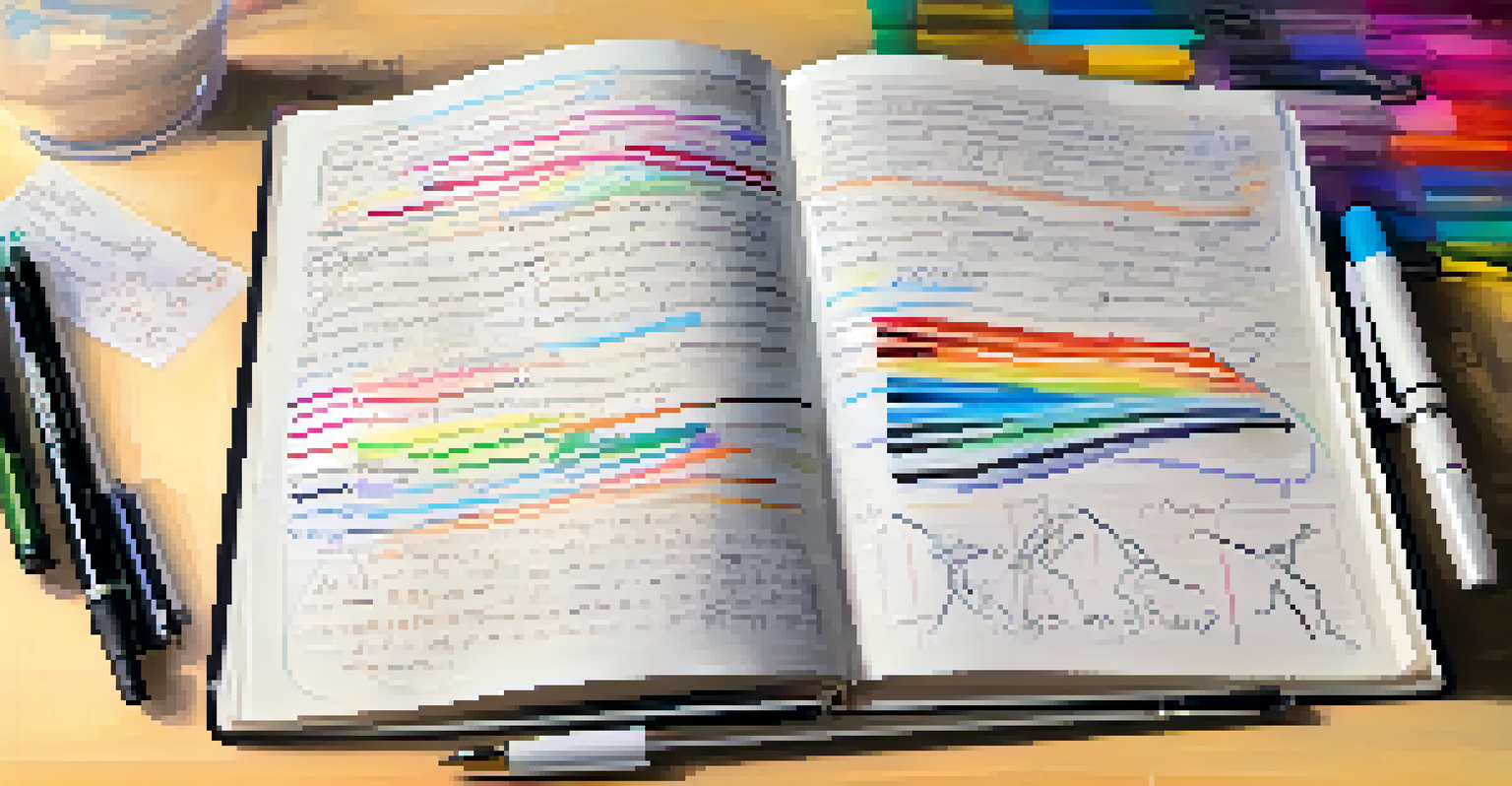Collaborative Learning Strategies in Dance Pedagogy

Understanding Collaborative Learning in Dance Education
Collaborative learning is a teaching approach that involves students working together to solve problems or complete tasks. In dance pedagogy, this means students share ideas, techniques, and feedback, fostering a deeper understanding of movement. By working in groups, dancers not only learn from their instructors but also from each other, enhancing the overall learning experience.
Collaboration is the essence of life. It is the foundation of all relationships and the key to success.
One effective method of collaborative learning in dance is peer-to-peer teaching, where students demonstrate movements they have mastered to their classmates. This not only reinforces their own skills but allows their peers to benefit from different perspectives and interpretations. The act of teaching also builds confidence, making students more comfortable in their abilities.
Additionally, collaborative learning helps to cultivate a supportive community within the classroom. As dancers engage with each other's creative processes, they develop a sense of camaraderie, which can be crucial in a discipline that often emphasizes individual performance. This nurturing environment encourages risk-taking and experimentation, essential components of artistic growth.
Incorporating Group Choreography Projects
Group choreography projects are a fantastic way to implement collaborative learning in dance classes. By assigning students to create their own dance pieces in small groups, they must communicate and negotiate their ideas, leading to richer outcomes. This process allows students to experience firsthand the challenges and joys of collaboration in the creative arts.

During these projects, dancers learn to appreciate differing styles and approaches, which broadens their artistic horizons. For instance, one student may excel in contemporary dance, while another specializes in ballet, merging these influences can result in innovative choreography. This blending of techniques not only enriches the final performance but also teaches students the value of diversity in the creative process.
Collaborative Learning Enhances Growth
Engaging in collaborative learning allows dance students to share insights and techniques, leading to deeper understanding and artistic development.
Moreover, these group projects can help develop essential soft skills such as teamwork, problem-solving, and effective communication. As students navigate disagreements or differing opinions, they learn to articulate their thoughts and compromise, skills that are invaluable both inside and outside the dance studio.
Utilizing Dance Journals for Reflection and Feedback
Incorporating dance journals into collaborative learning can significantly enhance the educational experience. By encouraging students to document their thoughts, reflections, and feedback on group activities, they develop a deeper understanding of their own learning processes. This practice also allows them to recognize patterns and areas for improvement over time.
The best way to predict the future is to create it together.
These journals can serve as a platform for peer feedback, where students comment on each other's contributions and progress. This form of constructive criticism fosters a culture of openness and vulnerability, essential for personal and artistic growth. When students feel safe to express their thoughts, they are more likely to engage authentically in their learning.
Additionally, dance journals can be a valuable tool for instructors to assess group dynamics and individual contributions. By reviewing these reflections, teachers can identify strengths and areas where students may need additional support, ensuring that each dancer's unique voice is heard and nurtured.
Creating an Inclusive Learning Environment
An inclusive learning environment is pivotal in collaborative dance pedagogy. This means recognizing and valuing the diverse backgrounds, abilities, and experiences of all students. When students feel included and respected, they are more likely to engage actively in group activities and share their perspectives.
To foster inclusivity, educators can implement various strategies, such as adapting dance styles to accommodate different skill levels or incorporating culturally diverse movements. This not only enriches the curriculum but also allows students to see themselves represented in the material, which can boost their confidence and willingness to participate.
Group Projects Build Community Skills
Group choreography projects encourage communication and teamwork, helping students develop essential soft skills through creative collaboration.
In addition, encouraging collaboration among diverse groups can lead to innovative outcomes. When students work with peers who have different backgrounds and experiences, they can create unique dance pieces that reflect a range of influences, ultimately enriching the learning experience for everyone involved.
The Role of Technology in Collaborative Learning
Technology plays an increasingly important role in collaborative learning strategies within dance pedagogy. Tools like video sharing, online forums, and social media platforms allow students to connect and collaborate outside of the classroom. This accessibility helps to bridge gaps in communication and fosters a sense of community among dancers.
For example, students can use video platforms to share their choreography and receive feedback from peers in real-time. This immediacy not only enhances learning but encourages students to be more open to constructive criticism, as they can see how their ideas resonate with others. It also allows for the exploration of various styles, as students can easily access a plethora of dance resources online.
Moreover, technology can facilitate collaborative projects in innovative ways, such as creating virtual performances or dance challenges. These activities promote teamwork and creativity, allowing students to think outside the box and explore their artistry in new and exciting formats.
Assessing Collaborative Learning Outcomes
Assessing the outcomes of collaborative learning in dance education can be complex, but it is essential for measuring student growth. Traditional grading methods may not fully capture the dynamics of group work or the development of soft skills like communication and teamwork. Therefore, educators should consider utilizing a variety of assessment methods.
One effective approach is to use self and peer assessments, where students evaluate their contributions and those of their classmates. This not only encourages reflection but also promotes accountability within the group. Additionally, incorporating feedback from instructors can provide a more comprehensive view of students' individual and collective progress.
Technology Connects Dancers Globally
Utilizing technology in dance education fosters collaboration and creativity, enabling students to engage with peers and resources beyond the classroom.
Furthermore, showcasing collaborative projects through performances or presentations can also serve as an assessment tool. This allows students to demonstrate their learning and creativity in a public setting, reinforcing the idea that collaboration extends beyond the classroom and into the wider dance community.
The Future of Collaborative Learning in Dance Pedagogy
As the landscape of dance education continues to evolve, collaborative learning strategies will play a crucial role in shaping future pedagogies. With an increasing focus on inclusivity and creativity, educators are likely to lean into collaborative approaches that emphasize community and shared learning experiences. This shift will not only benefit dancers but also enrich the dance community as a whole.
Emerging technologies will further enhance collaborative learning opportunities, allowing dancers to connect and collaborate like never before. Virtual classes and online collaborations are becoming more common, providing new avenues for students to engage with their peers across the globe. This connectivity will foster a more diverse and vibrant dance culture.

Ultimately, the future of dance pedagogy lies in embracing collective creativity. By prioritizing collaboration, educators can cultivate an environment where students thrive as individual artists and as part of a larger artistic community, ensuring that the art of dance continues to evolve and inspire.